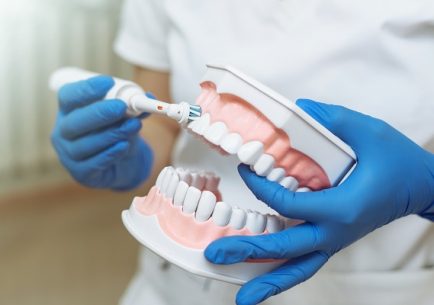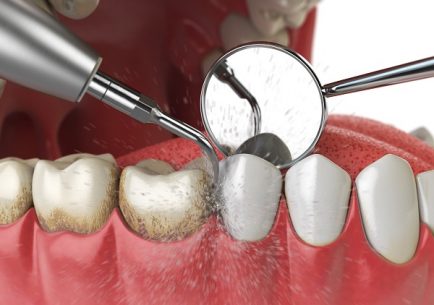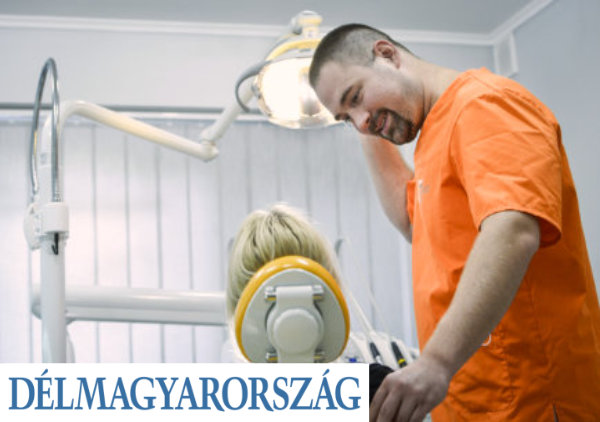Periodontal diseases
- Oral hygiene advice
- Dental plaque removal
- Curettage

Services
Oral hygiene advice
The first step in the treatment of periodontal diseases. Unfortunately, most patients have never been shown the necessary steps in routine oral care. So it’s no use brushing five times a day if it’s all for nothing…
In our practice, we provide oral hygiene advice to help patients learn and incorporat the brushing techniques that they need in their daily routine to maintain proper cleanliness after dental procedures. We try to demonstrate the techniques in an interactive way during the dental plaque removal process.


Dental plaque removal
Plaque is a fossilised mass of bacteria that has not been removed from the tooth surface by physical scrubbing for several days. When they appear next to or under the gums, they irritate the gums, causing the gums to start atrophy. This can lead to tooth loss over a few years.
The removal of tartar is generally recommended to be repeated every six months, but for many patients it is to be done more frequently, for example due to illness or inappropriate brushing technique. The dental plaque removal is usually combined with education, as this is the basis for the patient’s ability to keep their own teeth clean.
Curettage
Periodontal disease is a disease of the ageing generation, but signs can be seen as early as the age of 30 or earlier in extreme cases. It is important to mention that in these cases we are trying to repair a damaged condition, so in many cases the treatment is complex and we cannot point out any specific intervention for our patient until the first examination. In such cases, this involves a series of treatments, because it is a recurrent problem. Several weeks pass between treatments, giving the patient’s own tissues a chance to heal. In most cases, the degree of healing determines our next step. Many times the patient blames their family background for the atrophy, but unfortunately this is only true to a lesser extent. In most cases, the real cause of atrophy is oral hygiene and lifestyle.
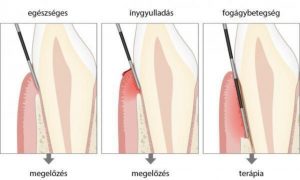
The most basic periodontal treatment is the removal of plaque. If this is done regularly, most periodontal diseases can be avoided, because if your mouth, teeth and gums are clean, the destructive effects of the bacteria that adhere to them cannot take effect, or if they do, then no faster than you age. (So partially, this is a rampant version of a natural process). If the patient notices the loosening of the teeth in time or if there are slight signs of the disease at an annual check-up, the treatments will be simple, quick and easy to carry out, just make sure they are regular. However, if you have not had proper maintenance for years, you need to consider which teeth can be preserved and which cannot.
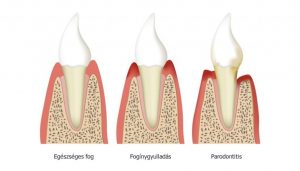
Usually the first half of the treatment is the most difficult, because that’s when the patient decides that they want to fix their teeth, and that’s when the first step – minor surgery for small problems, major surgery for larger ones – is necessary. This would be curettage, which means smoothing the root surface. After local anaesthesia, the root surfaces are scraped with various instruments to remove the infected layers. This gives the gums another chance to fall back into place and the degraded bone tissue underneath to regenerate. These are rarely repeated. Once the initial curettage has been done, the follow-up phase comes into play, where we try to ‘maintain’ the achieved good health condition with small, painless treatments.
In many cases, it takes years before another treatment is needed, but for particularly large defects, we perform some intervention every few months to maintain the good result. The future of the patient’s teeth in cases like these also depends to a large extent on their ability to regenerate. Smoking, for example, is a major limiting factor and its reduction is an advantage both during and after such procedures.

